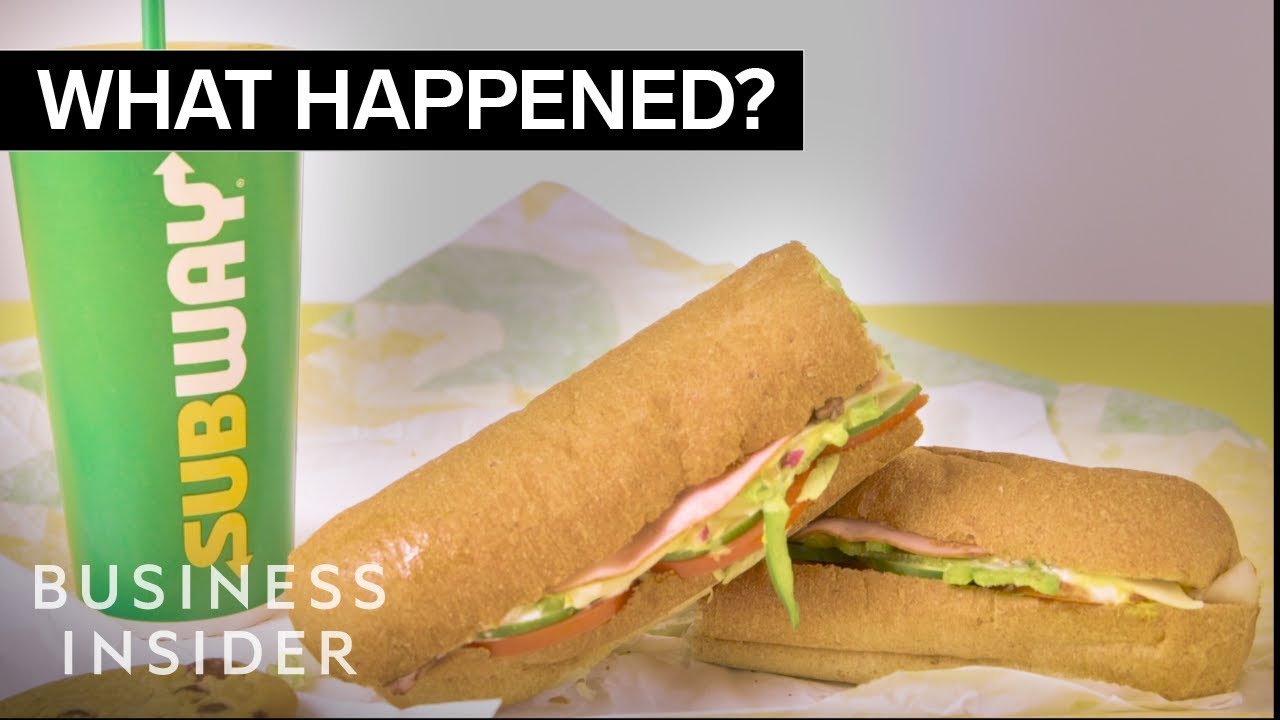The Rise And Fall Of Subway

Subway was once the trailblazer of the fast-food industry, revolutionizing the concept of a “fast and healthy” meal.
The restaurant chain started as a small sandwich shop in Connecticut in 1965 and eventually grew into a global franchise with over 44,000 locations in 110 countries. However, as the saying goes, “what goes up must come down.” In recent years, Subway has faced several setbacks, leading to its decline in popularity and overall performance. So, what exactly caused the rise and fall of Subway? Let’s take a closer look.
The Rise of Subway:
Subway’s journey to success began with its unique selling point – fresh and customizable sandwiches. Unlike other fast-food chains that served greasy burgers and fries, Subway offered a healthier alternative, with an emphasis on fresh vegetables and lean meats. This approach resonated with health-conscious consumers, especially as the obesity epidemic grew in the US. Along with its unique concept, Subway also had a strong marketing strategy, leveraging its spokesperson Jared Fogle and the iconic “Five Dollar Footlong” campaign, which attracted customers and generated buzz around the brand.
Moreover, Subway’s franchise model proved to be highly successful, allowing the chain to expand rapidly and reach every corner of the world. Its low startup cost and support system for franchisees made it an attractive option for those looking to enter the fast-food industry. By the early 2000s, Subway had surpassed McDonald’s in terms of the number of stores worldwide, solidifying its position as the top fast-food chain.
The Fall of Subway:
Despite its impressive growth, Subway’s downfall began in the mid-2010s. The chain’s first major setback came with the downfall of its longtime spokesperson, Jared Fogle, who was indicted on charges of possession of child pornography and soliciting underage girls for sex. This scandal had a significant impact on the brand’s reputation, causing a decline in sales and customer trust.
Furthermore, the rise of newer, more health-conscious fast-casual chains, such as Chipotle and Sweetgreen, started to steal Subway’s thunder. These chains offered a similar build-your-own-meal concept but with higher-quality, organic ingredients, which appealed to customers looking for even healthier options.
Another factor contributing to Subway’s decline was its lack of innovation. The core menu of sandwiches and salads remained unchanged for years, and the chain failed to adapt to changing consumer preferences. With a lack of new options, customers grew tired of the same old menu, leading to declining sales and foot traffic.
Additionally, accusations of financial mismanagement and mistreatment of franchisees added to the chain’s woes. Many franchise owners filed lawsuits against the company, alleging that they were forced to sell underperforming stores at a loss and faced unfair fees and demands from the corporate office.
The Road to Recovery:
To address the decline in sales and market share, Subway has made several changes in recent years. In 2016, the chain introduced a revamped loyalty program, followed by a new logo and decor in 2017. However, these efforts did not have a significant impact on sales. In 2018, Subway announced its plans to close over 500 stores in the US, signaling a shift towards a smaller and leaner business model.
Subway is now focused on improving its menu by introducing new and innovative items, including plant-based options, to attract health-conscious and younger customers. The chain has also launched a new marketing campaign, “Make It What You Want,” to highlight its customization options. Additionally, the company is working on improving its relationship with franchisees, with plans to offer more support and transparency.
Final Thoughts:
Subway’s journey is an example of how quickly a successful brand can fall if it fails to adapt and innovate. With its recent efforts, the chain is showing the willingness to change and stay relevant in a highly saturated market. Only time will tell if Subway can bounce back to its former glory, but one thing is for sure – it will need to continue to evolve and keep up with changing consumer preferences to survive in the cutthroat fast-food industry.









How to Choose the Right Business Partner
How Much Money Does My Small 9,000 Subscriber YouTube Channel Make?
A Simple Japanese Money Trick to Become 35% Richer
“Getting Rich Is Easy”
How To Avoid Key Online Business Mistakes.